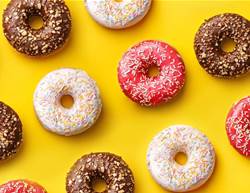Listening to your body to figure out how hungry or satisfied you are certainly seems more pleasant than counting kilojoules or weighing and measuring your food. It can be tricky, though. When you don't have hard numbers to guide you, how are you supposed to know for sure whether you're eating the right amount?
Enter the Hunger Quotient, a genius tool devised by dietitian Keri Glassman that makes it easy to figure out exactly how much you should eat - and when it's time to put down your fork or spoon. "I'm not a firm believer in counting kilojoules every day as a weight loss strategy, but we do need to be aware of not overconsuming," says Glassman. "Using the Hunger Quotient is a way to be mindful about eating enough and not overeating, without having to count kilojoules for everything you eat."
Tracking kilojoules and weighing or measuring your food isn't just annoying. It might not even be the best way of figuring out how much your body needs. "Just because a package states a certain portion size doesn't mean that's how much you should have, whether it be less, or even a little more," Glassman says. If you didn't have time for your usual workout, maybe half a sandwich would satisfy you for lunch instead of a whole one. Or maybe you've been running around nonstop all day, and your usual 3 o'clock handful of nuts isn't going to cut it.
You're probably nodding your head right now and wondering how you can get on board. So what exactly is this thing, and how does it work? Basically, your Hunger Quotient (HQ) is a number on a scale from 1-10 that helps you rate how hungry you are. By using it, you can figure out what your appetite is at any given moment. A 10 on the HQ scale means that you're famished and ready to pass out. A 1 means that you're so stuffed, you want to unbutton your pants ASAP.
And you can use it any time. If you're in the mood to munch, your HQ can tell you whether you're actually hungry or wanting to eat for emotional reasons like boredom or stress. Rating your HQ while you eat can also help you know when you've had enough.
According to Glassman, you always want your HQ to be between a 4 and a 6. "Anything between a 1 and a 3 is too full, which is a sign of overeating. And 7 to 10 is verging on being too hungry, which can cause overeating at your next meal," she says. "Staying in the 4-6 sweet spot means that you'll stay content, satisfied, and not eat based on emotions."
Not that figuring out your HQ is a cakewalk at first. Figuring out whether you're at, say, a 6 or a 7, calls for paying close attention to your body's hunger and fullness cues. It also means shutting off that inner voice that likes to tell you what you should or shouldn't be eating. (You know, the one that says you deserve a doughnut today, or that you should really only have a small cup of soup for lunch.) But the more you do it, the better you'll get.
Taking it slow can help. If you're mid-meal and feeling like you might be almost full, putting down your fork for a minute can make it easier to uncover your current HQ, says Glassman. So can ditching fearful eating - stuffing yourself to make sure you don't end up hungry before your next meal. Even if you're having lunch and know you won't be eating dinner until late, you still want to finish your meal at a pleasantly satisfied 4 or 5. If your HQ gets too high before dinnertime, you can always have a snack to get back to your sweet spot.
Perhaps the most important thing to remember? Everyone's individual HQ is different. "It takes time to learn your own personal 4 to 6," Glassman says.










